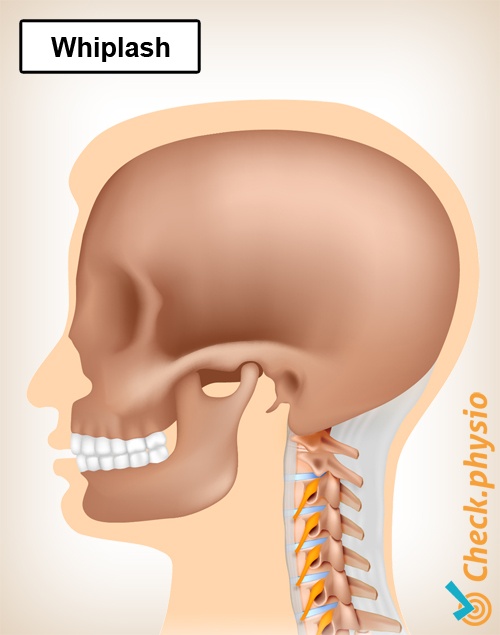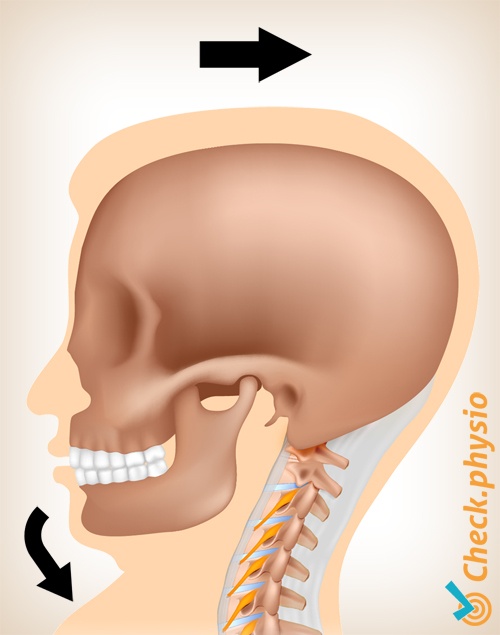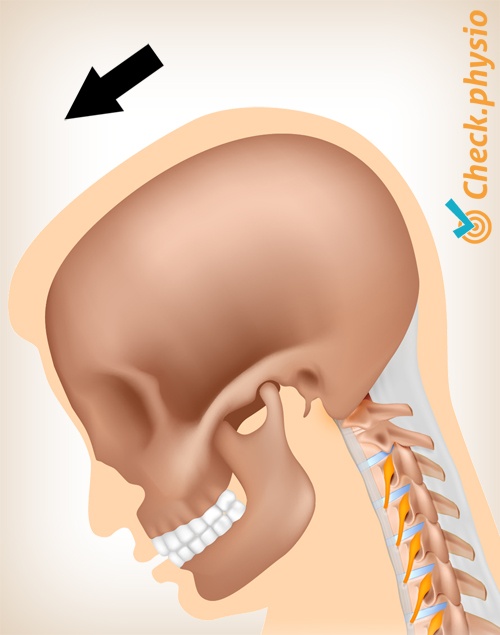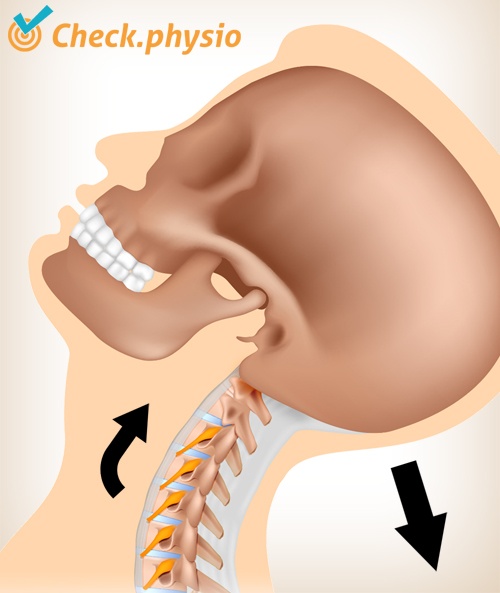- Conditions
- Whiplash associated disorders
Whiplash associated disorders WAD / acceleration trauma
Introduction
A whiplash exerts sudden strong forces on the neck. The most well known example is a whiplash that occurs in a rear-end collision. A car is hit from the rear, causing the occupant's head to move backwards and forwards in a short space of time.
Despite there not always being a demonstrable injury to the neck following a whiplash trauma, patients can continue to experience symptoms for weeks or even years after the accident.

Description of the condition
A whiplash trauma does not always involve injury of the muscles. We suspect that a whiplash causes damage to various structures as a result of compression (squashing) and traction (pulling) of the neck. In the case of a severe injury involving broken neck vertebrae, this can be clearly demonstrated by an X-ray. In many other cases we do not find obvious fractures, but the patient is experiencing ongoing symptoms.
Structures that could become damaged as a result of a whiplash include muscles, the spinal cord, joint capsules or ligaments such as the longitudinal ligament or the nuchal ligament, an intervertebral disc, a spinous process of a neck vertebra, an efferent nerve or the vertebral body.
Cause and origin
A whiplash injury is common following (car) accidents, for example when the car is hit from behind or from the side. This causes the head to swing up and down rapidly. Other activities and accidents can also result in a whiplash injury. Think of diving, skidding, falling from stairs, object falling on the head, bungee jumping, heading a ball, skiing, go-karting, horse riding, a hard landing of an aeroplane, bumper cars or external forces.
Signs & symptoms
There are many signs and symptoms that can occur following a whiplash injury. Sometimes these will occur immediately after the injury, but in other cases they will only occur days, weeks or even months after the injury. Common symptoms include:
- Neck pain.
- Decreased mobility of the neck.
- Headache.
- Hypersensitivity to light (photophobia).
- Pain in the shoulder and arm.
- Dizziness.
- Concentration problems.
- Fatigue.
- Anxiety.
- Decreased visual acuity.
- Depression, increased irritation or stress.
- Pain in the back.
- Insomnia.
- Tingling, pins and needles or a feeling of numbness in the hand.
- Decreased libido.
Diagnosis
The way in which the symptoms developed is an important part of making the diagnosis. A forceful movement of the head and neck must have taken place. The various structures of the neck can be examined by means of a physical examination. An X-ray can rule out possible fractures (broken bones).
Whiplash associated disorders are categorised in degrees of severity. With each degree of severity, the patient can experience symptoms such as numbness, headache, loss of memory, dizziness, tinnitus (ringing in the ear), swallowing problems and pain in the jaw joint.
Grade 0
No symptoms, no subjective or objective abnormalities.
Grade 1
Pain, stiffness and sensitivity of the neck, but no objective abnormalities.
Grade 2
Neck symptoms and other symptoms affecting the skeleton (think of decreased mobility and pressure pain).
Grade 3
Neck symptoms and neurological loss of function (such as decreased tendon reflexes, decreased muscle strength and disorders in sensory perception).
Grade 4
Neck symptoms and fractures (breaks) or dislocations.
Treatment and recovery
An important part of the treatment consists of giving the patient insight into his/her own symptoms. The patient must learn to cope with the symptoms independently and know how to influence them. The patient must know how to act in the event of a relapse or deterioration of the symptoms.
The physiotherapeutic treatment depends on how long the patient has already had the symptoms. For example, treatment in the first 4 days is aimed at reducing the pain. From 4 days to 3 weeks the treatment focuses on tackling the functioning of the neck and the activities during which the symptoms occur.
After 3 to 6 weeks the burden is gradually increased so that the patient can resume normal daily activities as far as possible. If no progress is made in the period from 6 weeks to 3 months, then we refer to this as delayed recovery. The chances of a complete recovery decrease if symptoms persist for more than 3 months.
The treatment is aimed at performing active exercises wherever possible. If a severe injury has been ruled out, there is no point in focusing on the pain. This can severely delay the recovery.
Exercises
Follow the exercise programme here with exercises for whiplash-related complaints.
More info
You can check your symptoms using the online physiotherapy check or make an appointment with a physiotherapy practice in your area.
References
Bekkering, G.E., Hendriks, H.J.M., Lanser, K., Oostendorp, R.A.B., Peeters, G.G.M., Verhagen, A.P. & Windt, D.A.W.M. van der (2001) KNGF-richtlijn. Whiplash Nederlands Tijdschrift voor Fysiotherapie. Nummer 3, 2001.
Verhaar, J.A.N. & Linden, A.J. van der (2005) Orthopedie Houten: Bohn Stafleu van Loghum.



